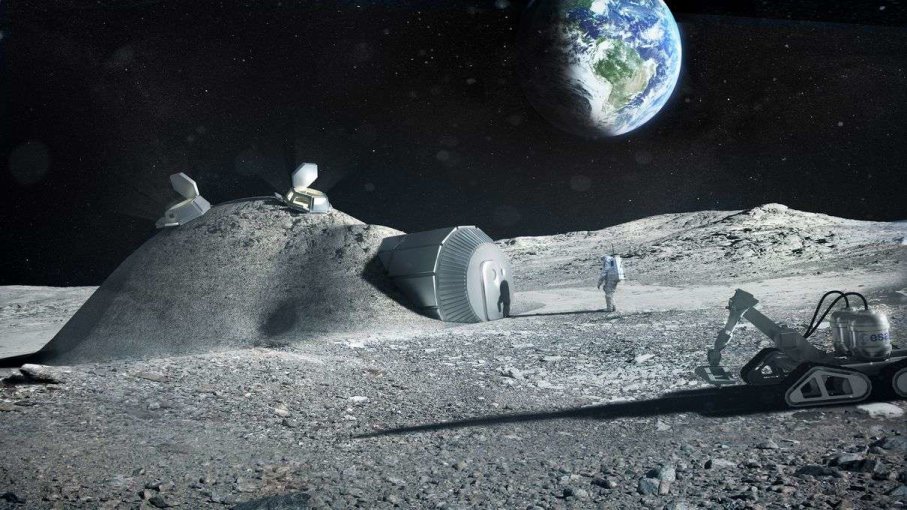European Space Agency Floats Idea of Building Moon ‘Village’ by 2030

The European Space Agency hopes to set up moon bases, like these proposed by Foster + Partners in 2013, in 15 to 20 years. ESA/FOSTER + PARTNERS
While NASA is focusing upon sending astronauts to Mars in the 2030s, the European Space Agency (ESA) is setting its sights a bit closer.
At a recent ESA-sponsored symposium in the Netherlands, scientists, engineers and space policy makers discussed the agency’s vision for what’s been called a “moon village” — a permanent outpost on the lunar surface that would be used both for research and for harvesting raw materials that could be used in missions to deeper space. While the plan and the budget needed still haven’t been finalized, the Europeans are gauging international interest and looking at what technologies would be needed to make it a reality. One idea is to use robots and massive 3D printers to erect the base more efficiently.
News headline writers had fun with ESA’s use of the term “village,” but as ESA Director General Jan Woerner explained at a recent press conference, the Europeans aren’t envisioning some quaint town with a square full of cafes and cottages. “I already got mails, asking for position of mayor of that village,” he said with a bemused look.
“A village, from my understanding, is a place where people come together with different ideas and create something that is more than just an individual,” said Woerner. “A moon village is a single place, with multiple users. Maybe one is a country more interested in science. Another may be a private company interested in mining. Another may be interested in putting to use the moon as a stepping stone for further exploration.”
The project wouldn’t necessarily compete with the United States, which has opted to bypass revisiting the moon in favor of concentrating on Mars, but instead might complement NASA’s efforts. University of Notre Dame planetary geologist Clive Neal says that a lunar base would be invaluable for studying the effects of reduced gravity on astronauts’ health. While the International Space Station has provided an opportunity to study the longer-term effects of zero gravity, the Moon, which has one-sixth the gravity of Earth, might provide a better indication of how humans would fare on Mars.
“We know that zero gravity has certain effects,” says Neal, “but we don’t know if there is a linear relationship between zero gravity and Earth gravity.”



 Creators of mankind
Creators of mankind Description of “Tall white aliens”
Description of “Tall white aliens” Where they came from?
Where they came from? About hostile civilizations
About hostile civilizations The war for the Earth
The war for the Earth “Tall white aliens” about eternal life
“Tall white aliens” about eternal life Video: “Nordic aliens”
Video: “Nordic aliens” Aliens
Aliens Alien encounters
Alien encounters The aliens base
The aliens base UFO
UFO Technology UFO
Technology UFO Underground civilization
Underground civilization Ancient alien artifacts
Ancient alien artifacts Military and UFO
Military and UFO Mysteries and hypotheses
Mysteries and hypotheses Scientific facts
Scientific facts


















